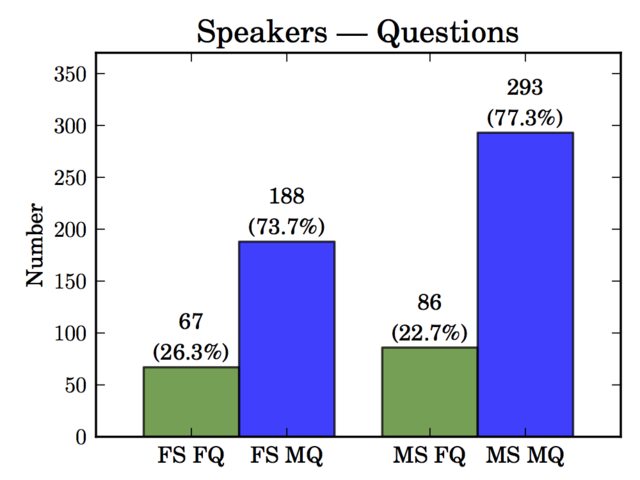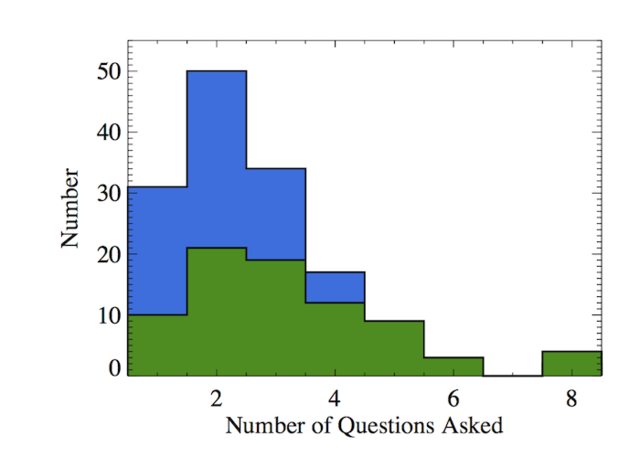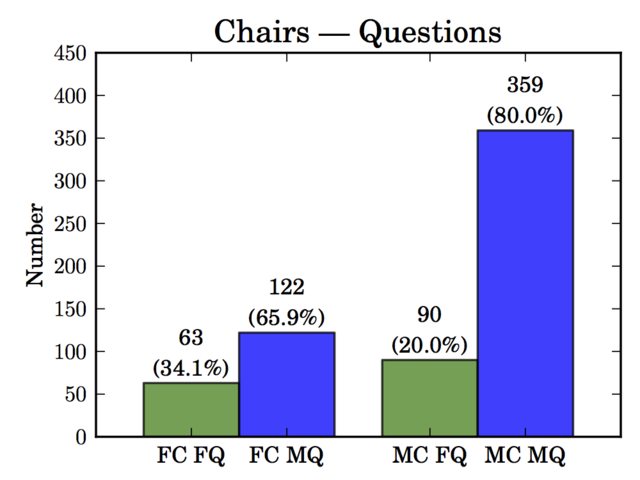Cross-posted from University of Washington Astronomy PhD Candidate Jim Davenport’s blog:
Today I’m proud to announce that my AAS 223 Hack Day project is finally finished! Our “paper” (really an informal report) on the study of gender in AAS talks has hit astro-ph: http://arxiv.org/abs/1403.3091
This all started about 6 months ago when I was attending a different astronomy conference. I observed that the gender ratio for speakers seemed well balanced, as did the audience. Both were perhaps 60%/40% (Men/Women). However, the questions mostly seemed to be asked by men!So I decided to organize a volunteer effort to study this. We collected data using a simple web-form (that Morgan Fouesneau graciously helped me make), and asked conference attendees to record the gender of every speaker and every question asker for talks they attended.We got over 300 submissions! I was going to be happy with 100, and figured I’d have to beg a few friends to participate. This was enough data to make some interesting plots… and also just enough data to know that we need more data!Here are a few highlights from the study:
1. MEN ASK DISPROPORTIONALLY MORE QUESTIONS THAN WOMEN IN TALKS.
FS FQ = Female Speaker, Female Questions,
FS MQ = Female Speaker Male Questions, etc
2. WOMEN ARE ASKED SLIGHTLY MORE QUESTIONS PER TALK THAN MEN
Blue is talks by men, green is talks by women
3. THE GENDER OF THE SESSION CHAIR HAS A STRONG IMPACT ON THE GENDER RATIO OF THE QUESTIONERS.
FC FQ = Female Chair, Female Questions,
FC MQ = Female Chair Male Questions, etc
This result shocked me, and begs to be studied further. The session chair seems to greatly impacts the gender ratio of the questions being asked. What does this mean?! Are male session chairs preferentially selecting male questions? Are women less likely to speak up when an additional man is standing in front?
We need data on the format of the session to understand the origin of this result, and to make actionable suggestions/best-practices for future conferences!
THE FUTURE:
I want to conduct a more controlled follow up study! It’s clear to me that there’s more to learn, and maybe ways we can improve how our conferences are conducted.
But I’ll need help doing it!
The upcoming AAS 225 in Seattle (Jan 2015) would be a perfect time to do a follow-up study. We need to gather more detailed data from every talk. A big volunteer effort might get us there, but if the AAS is interested in helping that could be a huge shot in the arm. We did this project with $0 spent and only social media / friends to help advertise. With the AAS’s help we could get this data and help make our annual meetings even better!
Lastly, a huge thanks to the wonderful volunteers who sent us data, the organizers and sponsors of AAS Hack Day, and [Morgan, Erin, Alex, Katja, Laura] for making the analysis/writing happen!



Very interesting data! Kudos for collecting and analyzing it. It mirrors what I have observed at conferences for years. I wonder also if the size of the audience could be studied, i.e., look at splinter session talks vs. large plenary session talks?
My own personal experience as a young (postdoc), female astronomer is that I find it very very hard to ask questions, especially in big talks. I am a pretty confident person in general, have no problems giving talks or fielding questions, but I get extremely nervous when I attempt to ask questions in conferences! I have had my voice falter, palms sweat, etc — the whole nervous response. I don’t understand it well myself. The result is that I usually don’t ask a question unless it is a talk that is my direct specialty and I basically know the answer in advance. I think part of it is the fear of in any way asking what might seem a “stupid question” — I think women scientists are extremely conscious of how they are perceived (and judged more harshly), and this leads to a more cautious behavior in the public sphere. And what draws every eye in the room more than a unrehearsed question?
I suspect smaller sessions have more female questioners. If I think back to all my AAS conferences, I only asked questions in splinter talks. Further, in even smaller meetings (like journal clubs, with my colleagues I know well), I have no problem asking lots of questions. So I think this is a “controlled image/caution” issue — and it would be good to get statistics on minorities as well, as I think we might find similar results.
Also, let’s make all the session chairs female, eh?
I don’t think it’s just you or just women. I’ve been in astronomy for some time, but as a man I find it pretty hard to ask questions in talks due to nervousness (with similar symptoms to you) and fear of asking something that might be stupid. This is despite seeing senior and clever people asking stupid questions on a number of occasions.
Often session chairs, because they are experts in the field, ask questions, not for every talk, but more often than the typical session attendee. Has this been taken into account? It might account for a fair amount of the questions and the skew. Something to think about for AAS in 2015